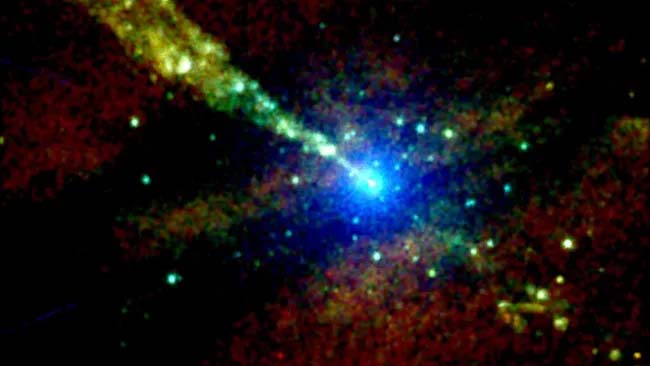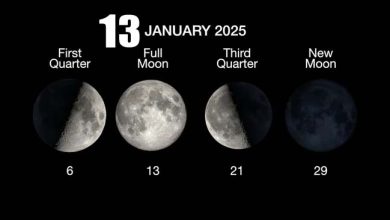Telescope spots ‘knots’ emerging from nearby black hole jet

Science: Astronomers have scoured decades-old data from NASA’s Chandra X-ray Observatory to find bright, lumpy markings on a jet of energy emanating from a nearby black hole. Surprisingly, the “knots” appear to move much faster when viewed in X-rays than they do at radio wavelengths, scientists said.
“The X-ray data reveal a unique picture that you can’t see in any other wavelength,” study lead author David Bogensberger, an astrophysicist at the University of Michigan who led the new study, said in a recent news release. “We’ve shown a new approach to studying the jet and I think there’s a lot of interesting work to be done.”
The study, which was published in The Astrophysical Journal on October 18, comes as NASA has postponed its final decision about budget cuts that will determine the fate of the observatory (which faces premature cancellation after its budget was cut due to the agency’s financial restrictions) and the X-ray community that relies on it for research. NASA continues to operate at 2024 levels despite the new fiscal year starting on October 1, in part because its 2025 budget depends on the outcome of the presidential election and party changes in the House and Senate, SpaceNews reports. In the meantime, astronomers continue to emphasize the scientific value being provided by the X-ray telescope, which turned 25 in July. In the new study, Bogensberger and his team analyzed two decades of Chandra observations of the active supermassive black hole hidden at the center of the Centaurus A galaxy, a warped elliptical vortex of gas and dust about 12 million light-years from Earth. At least one of the newly detected “jet knots” appears to be traveling at 94% of the speed of light, much faster than the 80% of the speed of light recorded in radio observations, according to the paper. “This means that radio and X-ray jet knots move differently,” Bogensberger said in the statement. “There’s still a lot we don’t know about how jets work in the X-ray band.”





